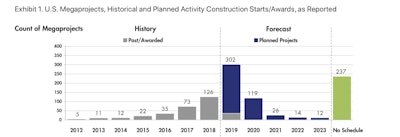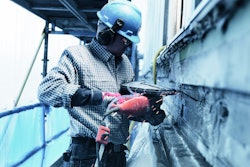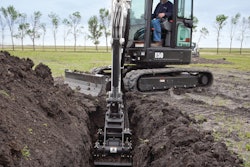
Megaprojects are set to be one of the biggest disruptors for the construction industry. Bent Flyvbjerg, an expert in project management at Oxford’s business school, says that globally, megaprojects make up 8% of total global GDP. However, widespread shortcomings and low success rate of megaprojects have been so pervasive that those involved have begun to question the very model, according to FMI.
Consider these statistics:
- At least 320 megaprojects have been awarded in the U.S. since 2012 — an investment valued at over $700 billion.
- Another 670-plus megaprojects are being planned, representing a future investment opportunity likely to reach $2 trillion.
The recent exits of prominent engineering and construction (E&C) players in certain types of megaproject markets indicate the situation may be coming to a head. Yet, at the same time, megaprojects are constantly growing larger and increasing in number and complexity. Consider this: Between 2013 and 2018, the annual value of U.S. megaproject starts increased from 3% to approximately 33% of all U.S. construction project starts.
Read next: US Infrastructure Needs Maintenance Not More Mega-projects
Similarly, FMI predicts that over the next decade, annual construction put in place (CPiP) on megaprojects in the U.S. will increase nearly 600%, from about $50 billion to just over $350 billion.
These are big numbers. So what does this mean for the future of the E&C industry? Will we continue tormenting ourselves with project delays, cost overruns, lawsuits and political debacles until the end of time? Or has the industry finally reached a point where we can say “no more.”
The answers are unclear, but we are starting to see signs of a cultural shift in how owners, contractors and designers collaborate and interact with one another on megaprojects. Though success stories are anecdotal and limited, one of the key topics that keeps bubbling to the surface is trust. It is this basic emotional state, a central theme of all human relationships, that can make or break entire project teams and associated outcomes.
FMI’s latest market forecast on megaprojects shares insights from industry leaders on five key ingredients that drive successful megaprojects, and offers questions and recommendations around how to change the name of the game.
Download the FMI report, "Megaprojects: Changing the Conversation."
Read next: 3 Biggest Disruptors in the Construction Industry of the Future
 FMI
FMI
 FMI
FMI



















